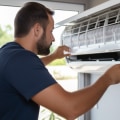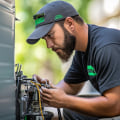Air filters are an essential part of any internal combustion engine, as they provide the necessary air intake for the fuel mixture to burn correctly. According to How Stuff Works, if a filter is functioning properly, it should be covered with a gray and ashy coating after three months of use. Additionally, a working air purifier will have clear and consistent airflow. If the purifier doesn't expel air when you place your hand in front of it, it's likely a problem.
Most manufacturers suggest replacing the air filter every 12,000 miles (approximately 19,000 km) or every 12 months, whichever comes first. However, if you live in an agricultural area or an area with a lot of dust or impurities in the air, you should consider replacing your air filter more often. An inadequate air supply can cause carbon deposits to build up in the engine, which will eventually activate the engine control light. If the light comes on, check the air filter to see if it needs to be changed before performing other diagnostics. Keeping the air clean requires regular use of the air purifier, along with other measures such as adequate ventilation, regular cleaning and controlling sources of pollution.
As the purifier cleans the air, it passes it through a filter that traps particles such as pollen, mold and other particles. In addition, the air surrounding the purifier is the cleanest in the room, so these readings will not reflect the true air quality in the room. If you notice unusual noises when starting your car or smell gas when you start it up, it's likely because not enough air is getting into the fuel injection system and excess unburned fuel is leaving through the exhaust pipe. To determine if your air filter is working properly, you can place an air quality monitor near the air vent of the purifier or where you usually hang out in the room. A worsening of parameters such as TVOC or CO2 could indicate a problem with the purifier. A visual inspection of the air filter under a bright light will show a lot of dirt, but not all of the tiny particles can be easily seen.
If there's a lot of noise in the unit or it looks like it's making an extreme effort to expel air, that's also a problem. The purifier can even become a source of contamination by itself, so it is necessary to remove the dirty filter as soon as possible. By placing an air quality monitor next to rooms where you're using an air purifier, you can easily monitor changes in air quality. A professional indoor air quality assessment by an expert will quickly determine if and how purification is helping your space.



